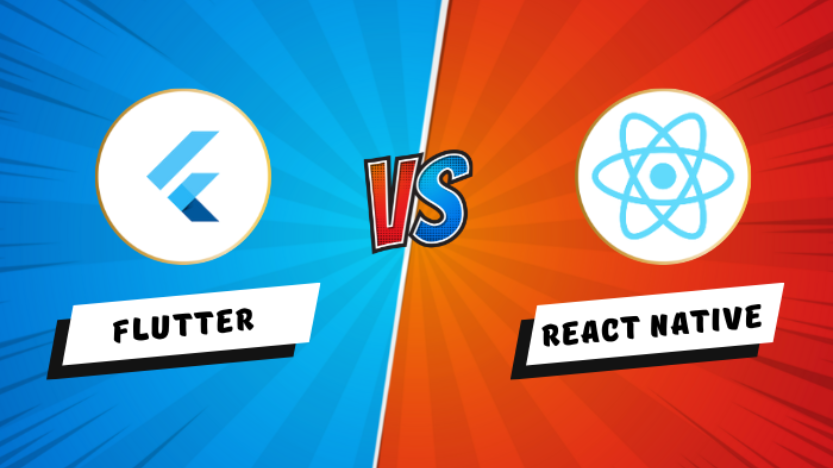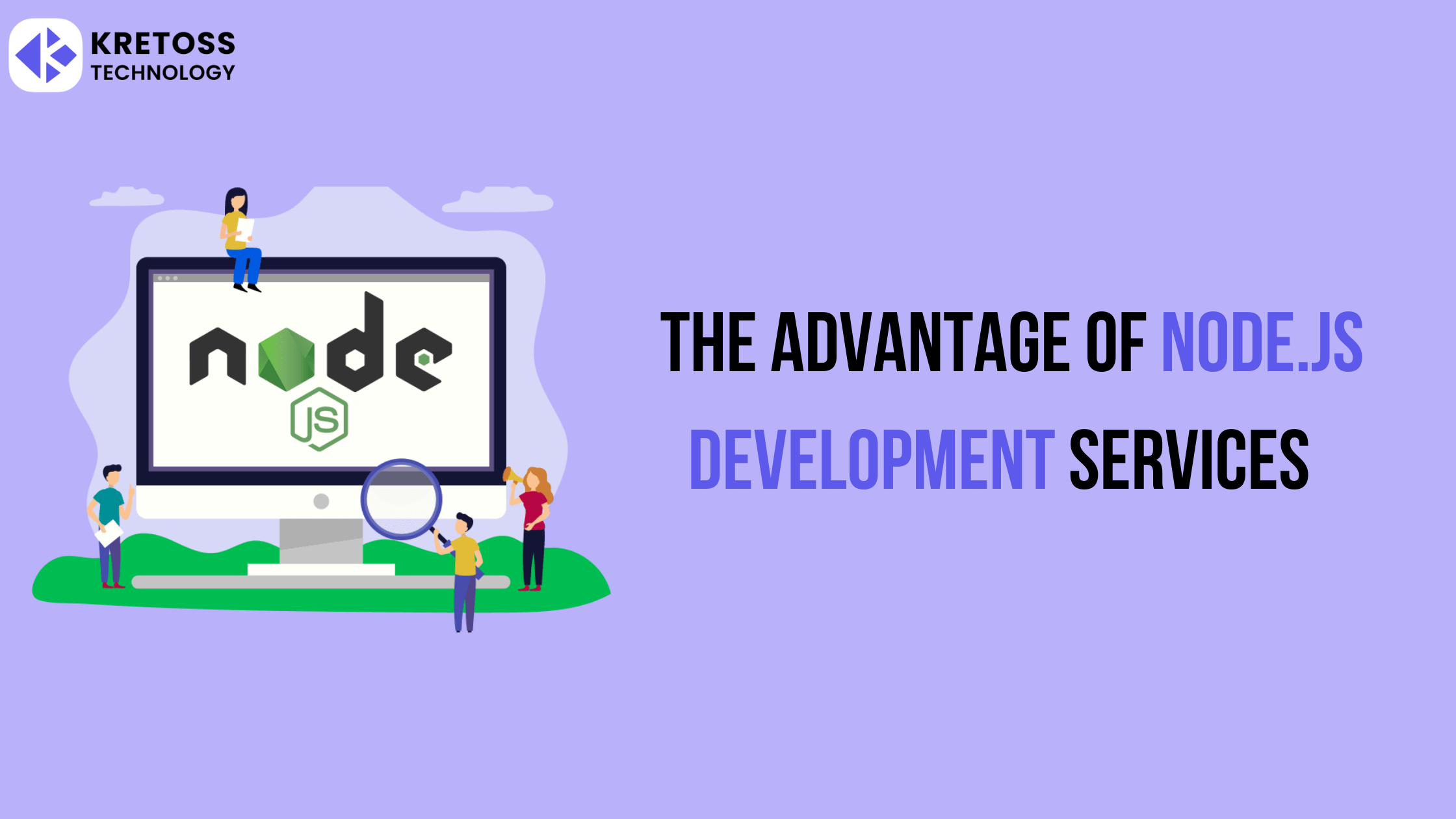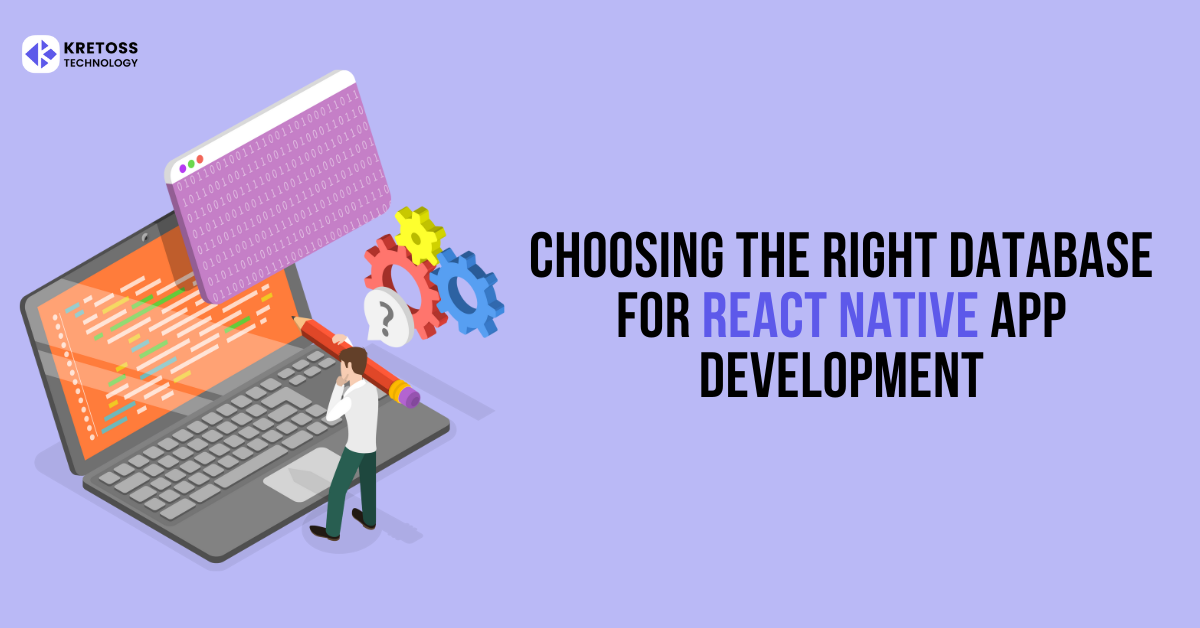
Flutter vs React Native in 2023 – Read a complete and detailed comparison between flutter and react-native framework. Know in detail here.
It might be challenging to decide between Flutter and React Native. Both offer advantages and disadvantages, but which is the better choice for your project?
One of the hottest subjects in the programming industry right now is Mobile App Development. With more than 3.8 billion active app users globally, it makes sense that developers are constantly seeking innovative approaches to produce better applications more quickly.
Flutter and React Native are two of the best frameworks for developing mobile applications. Which framework is best for your project, though each has advantages and disadvantages?
Google launched the open-source software development kit known as Flutter. It uses to develop cross-platform applications for iOS and Android.
Facebook developed the mobile app framework React Native. Applications for Android and iOS are also made with it. React Native is the framework that 42% of app developers believe is best for creating cross-platform apps.
We have included a thorough comparison of Flutter vs React Native to help you in deciding which framework is preferable for creating a cross-platform project. So let’s get going!
Choosing the best mobile app framework
What is Flutter?
Google developed the cross-platform Flutter App Development framework in 2017. The creation of cross-platform mobile apps uses it. In 2021, 30% of participants picked flutter as their cross-platform development framework of choice. Up from 23% in 2020, this.
The basis of Flutter is the Dart programming language. Dart is a cutting-edge, object-oriented programming language that gives developers the ability to build dependable, high-performance apps.
Developers having experience with other C-style languages, including Java and JavaScript, will find Dart to be simple to learn.
All types of devices—including smartphones, tablets, and desktop computers—can enjoy the same Flutter experience. A collection of widget offer by the framework may use to create user interfaces that comply with the Material Design standards.
A debugger, an animation and graphics library, and support for unit testing are just a few of the strong developer tools that come with Flutter.
Features of Flutter
1 – Open-Source Platform
Google developed and supports the open-source platform Flutter. It comes with extensive motion APIs, Cupertino Widgets, and a built-in material design. Together, these factors make employing Flutter create apps that are both attractive and user-friendly.
Additionally, Flutter provides a variety of design alternatives to consider while creating original apps for Android devices.
2 – Rich Widgets
Custom widgets serve as the foundation of Flutter. On the basis of the customers’ business models, developers may quickly combine several devices to provide a beautiful and expressive user interface.
The cross-platform Flutter frameworks offer a wide variety of widgets for aesthetic, structural, and other types of features.
Additionally, you may design your own widgets and ensure that the app runs as it should in its original environment. Widgets improve cross-platform apps’ functionality as well as their appearance.
3 – Single Code Base
Flutter just needs one codebase, therefore creating cross-platform applications with it is usually rather simple. Because Flutter performs like a native app, many businesses prefer using it to create apps.
4 – Quick Reload
The exclusive Quick Reload functionality makes it simple and quick for developers to explore. The Flutter app benefits from having useful functionality, a user-friendly UI, and the ability to debug programs.
The most recent updates in the app’s stage of continuous development are also displayed through hot reloading.
5 – Support for Google Firebase
Flutter’s framework benefits greatly from Google Firebase support because it is built by Google. It helps in the creation of scalable apps.
Advantages of Flutter App Development
- Utilizing the same codebase quickly
- The experimenting and bug-fixing process is made easier by “Quick Reload.”
- Customization is increased by structuring the architecture.
- Separate UI avoids mistakes
Disadvantages of Flutter App Development
- Young framework with several common problems that are difficult to fix.
- Apps take up a lot of space and are slower to download.
- Dart, a programming language, and its infrastructure are updated often.
- Although amazing, libraries and support are not as effective as native development.
Also, read Benefits of Using Flutter for App Development
What is React Native?
Another cross-platform framework is React Native, however, it was developed by Facebook. Because it uses JavaScript, creating cross-platform apps is easier.
The majority of web developers prefer JavaScript as their programming language of choice. Given the mobile product’s youth, its ecosystem has developed swiftly.
React Native apps are now preferred by many businesses, including Microsoft, who used the framework to create a new Xbox shop app. The market has given huge acclaim to React native apps.
React Native apps now have option support for their new architecture, which makes use of the Fabric Renderer and TurboModule systems.
Additionally, React Suspense, concurrency, and server-side rendering are all provided via the Fabric Renderer system. Additionally, a toolset that is much faster and more accessible is introduced.
Features of React Native
1 – UI Focused
The process of creating a mobile app’s user interface is rather difficult. Easy and responsive app UI design is possible with React Native applications. Because of its superior rendering capabilities, the worldwide developer community favors react native apps over the competition.
2 – Support from Facebook
Facebook creates and supports React Native. They are given a lot of time and regular upgrades in the React Native framework. Furthermore, React Native’s support makes it a solid and forward-looking solution.
3 – Speed Up Development
A standard JavaScript page, which is a feature of React Native, makes it simple and quick to load an application. According to this feature, consumers are less likely to leave React-generated apps since they load more quickly.
Additionally, this speeds up Google’s scan of the sites and improves its rating.
4 – NPM for Installation
React Native is much simpler and more seamless to deploy. It uses Node Package Manager (NPM) to ease installation. And the application of this framework is known to those who are familiar with NPM commands.
5 – Smart and Flexible
Due to React Native’s high level of flexibility within the App Development team, online applications are much easier to maintain and upgrade. Both the programming logic and the suitable testing cases are simple to comprehend and pick up.
Advantages of React Native
- Due to the use of the wildly popular JavaScript language, extensive base packages.
- Instead of doing so separately, developers may create an app for a variety of devices using a single codebase.
- Easy to learn for React developers
- Developer independence increases code reuse and reduces costs
Disadvantages of React Native
- Poor performance to Flutter
- Apps are bigger than native ones
- Native developers still require
- Many unused libraries and packages
Also, read 6 Reasons to Use React Native for Mobile App Development
Flutter vs React Native – Comparison
1 – Programming Languages: Flutter vs React Native
In 2011, Google created Flutter using the Dart programming language. Dart is a programming language that is thought to be quicker than native react code.
Although Dart’s syntax is flawless, understanding the language’s object-oriented approach can be challenging. It indicates that not everyone is capable of handling it. And here is where React Native excels.
JavaScript, one of the most popular programming languages utilized globally, is used to create React Native code.
Pre-built modules are available through the React Native framework, saving both time and money. This makes choosing the React Native platform over Flutter a great advantage.
2 – Performance
Considering that the C/C++ library is used to generate mobile apps, Flutter’s speed is amazing. Because it is so near to machine language, Flutter’s implementation is preferable.
Unlike React Native, which just has the UI components built and not the entire application. Because Flutter is written in the high-performance programming language Dart, many developers prefer it to React Native.
The React Native method is different from Flutters in the performance comparison discussion. React Native just compiles its UI components rather than the entire program.
The react native UI components build similarly to their native counterparts, with the JS code running on a separate thread that connects to the native modules over a bridge to carry out any necessary actions.
While React Native components’ performance may be superior to that of its hybrid version, Flutter is still far better.
3 – Ecosystem
Flutter is better than React Native when it comes to ecosystems. A Flutter lacks a number of mobile development packages because it introduces two years after React Native.
A Flutter, on the other hand, is expanding and has created a number of fundamental mobile development packages for public usage. Flutter now offers over 23,000 packages, according to the most recent data.
Flutter wasn’t published until two years after React Native, allowing editors plenty of time to fall in love with it.
Hit reloads with a well-developed and reliable framework to support it. Additionally, React Native has five times more packages than Flutter in the case of the packages.
4 – UI and Programming API
The Flutter framework completely depends on its own unique programming language.
Utilizing its unique widgets, Flutter’s framework modifies before cross-platform app development begins.
The automatic compatibility of the devices with Apple’s Cupertino and Google’s Material Design makes this the framework’s key advantage over React Native.
In the framework of Flutter, there are no third-party applications or customized components.
React Native’s framework uses third-party or unique react-native components. As a result, the code begins to generate patchwork effects.
It does not view as a drawback, though, because JavaScript, the development language for React Native, has a number of advantages.
However, Flutter wins in this round on a broad comparison of build, user interfaces, and developer API.
Flutter vs React Native – Will Flutter Kill React Native?
5 – DevOps Support
When comparing DevOps between React Native and Flutter, the first is seen to be superior. The official CI and CD documentation is the primary drawback with Flutter in this scenario.
The documentation for the Flutter framework has a whole section. It has a number of links that make it simple to integrate the CI/CD into its apps.
React Native develop by Facebook and features a wealth of third-party libraries, support, help files, and other resources. Without a doubt, React Native is superior in terms of DevOps.
The only way Flutter can compete with React Native App Development is if it can match React Native’s developer community on a global scale.
6 – Installation
You must download the binary version of a flutter from GitHub for the chosen platform in order to install it. Each system has a unique perspective on seats.
For instance, you must install the extra zip file and add it to a PATH variable when installing it for macOS. The primary distinction between Flutter and React Native installation is this.
The React Native installation process is simple. If you have programming skills in JavaScript, you can use the node package manager to install React Native with ease.
Despite the absence of a one-line installation and a unique native OS package management for Flutter and React Native. Due to this, both mobile app frameworks are outdated.
7 – Documentation
Flutter offers a sharing community and active and helpful documentation. The Flutter team is accommodating, which makes running the business very simple.
However, no matter how good the documentation is, it will be challenging to understand if you have no prior programming knowledge. Additionally, it has been said to be less ineffective in resolving the frequent problems that Flutter users face.
The React Native documentation is sufficient and user-friendly compared to Flutter. Additionally, the react native team is incredibly helpful. Popular cross-platform programming issues like installing lazy load native modules and numerous parameter descriptions cover in the documentation that is readily available.
8 – Architecture
Flutter is still relatively new, introduce after React Native; as a result, integrating certain architecture in the app sometimes becomes difficult to understand.
The BLoC (Business Logic Component) design, which Google represented at DartConf2018, is one of its well-known architectures. The streams and RxDart are the only components of this design paradigm.
The two patterns Flux and Redux make up the majority of the new react native architecture.
The former was developed by Facebook, whereas the latter is the most well-liked choice among supporters. These have a one-way data flow and store the application’s state in a location called the Store.
9 – Reusability of Code
One of the most detailed comparisons of Flutter vs React Native can find here.
Dart, whose codebase may reuse several times, use with Flutter. A specific UI widget tree must define by the developers, and the defined logic must reuse. Flutter beats React Native due to its attractive user interface.
React Native’s framework is not very compatible. It enables the developer to create Javascript code and apply it to any platform. And not all mobile app platforms are compatible with one another. The creation of cross-platform React Native applications also impacts by this.
10 – Quality Control
Flutter has a unique quality-control testing feature built into it, much like every other Google-created software.
With Flutter, you can test a single widget or run integrated tests for everything. Additionally, it includes several thorough testing documentation. The structure is also quite stylish and up-to-date with the most recent trends.
When it comes to built-in unit test capabilities, React Native’s quality framework is quite poor. Additionally, react native developers may quickly close the gap with the help of outside frameworks like Jest and Detox.
Which is More Popular – Flutter or React Native?
React Native is more in demand than Flutter because of its connection with another well-liked web framework. React Native also has a sizable user base because it introduces before Flutter.
Additionally, React Native engineers are in higher demand than Flutter programmers. It doesn’t lower Flutter’s demand, either, since it keeps growing.
The Flutter plugin for Android Studio includes code tools to make writing and debugging programs simple. With over 12 million downloads, it is clear that the Flutter app will become much more well-known over time.
Flutter vs React Native – Which should you choose?
Both Flutter App Development Services and React Native App Development Services have advantages and disadvantages so which one is best for your projects will depend on your knowledge and the current project requirements.
If you are familiar with JavaScript, React Native is a great option for cross-platform development. Additionally, if you have knowledge of the JavaScript bridge, you may be able to respond properly and quickly.
Flutter applications prefer over react native apps for cross-platform mobile development since both programming languages are quite different and the development process is unique.
And Flutter is a fantastic option if you want improved performance, a friendly ecosystem, and consistency between the communities.
FAQS – Flutter vs React Native
1 – Which is better: React Native or Flutter?
Both Flutter and React native offer a high level of scalability and a positive user experience. However, because you’ll need fewer developers and it will take up less of their time, creating your app with Flutter is quicker and simpler.
2 – Is Flutter faster than React Native?
Flutter codes are really easy to write than native codes. When using native technology, developers must create two separate programs for Android and iOS, which obviously takes longer.
3 – Will Flutter replace React Native?
Probably yes is the correct response. Performance-wise, Flutter apps beat React Native applications because of the lighting up Dart-to-Native binary link.
Through a JavaScript bridge, React Native communicates with native APIs. Not all development requirements can successfully satisfy by the JavaScript bridge concept.
4 – Is the future Flutter?
Because of its advantages, including quick app development and upgrades for both iOS and Android platforms, Flutter has risen in popularity. Many mobile app development companies think that Flutter development is the next big thing.
Conclusion
In conclusion, we can say that both sides of the debate about Flutter vs React Native have their pros and cons.
Flutter prefer by many businesses in the cross-platform mobile development business over React Native.
However, many compare React Native to some of the most outstanding native applications available today, like Facebook and Instagram.
Both of them have many additional characteristics, including cross-platform mobile frameworks. React Native is preferred over Flutter in many ways.
Additionally, Flutter has fewer packages accessible because it is still a new addition to React Native. The key takeaway is that because both platforms have distinct purposes, attention should give according to the situation.


















